Remote hideaways: first insights into the population sizes, habitat use and residency of manta rays at aggregation areas in Seychelles
February 2024
Lauren R. Peel, Mark G. Meekan, Ryan Daly, Clare A. Keating, Shaun P. Collin, Josep Nogués & Guy M. W. Stevens
Keywords: Mobulid • Elasmobranch • Abundance • Conservation • Lagoon • Coral atolls • Mobula alfredi • M. birostris
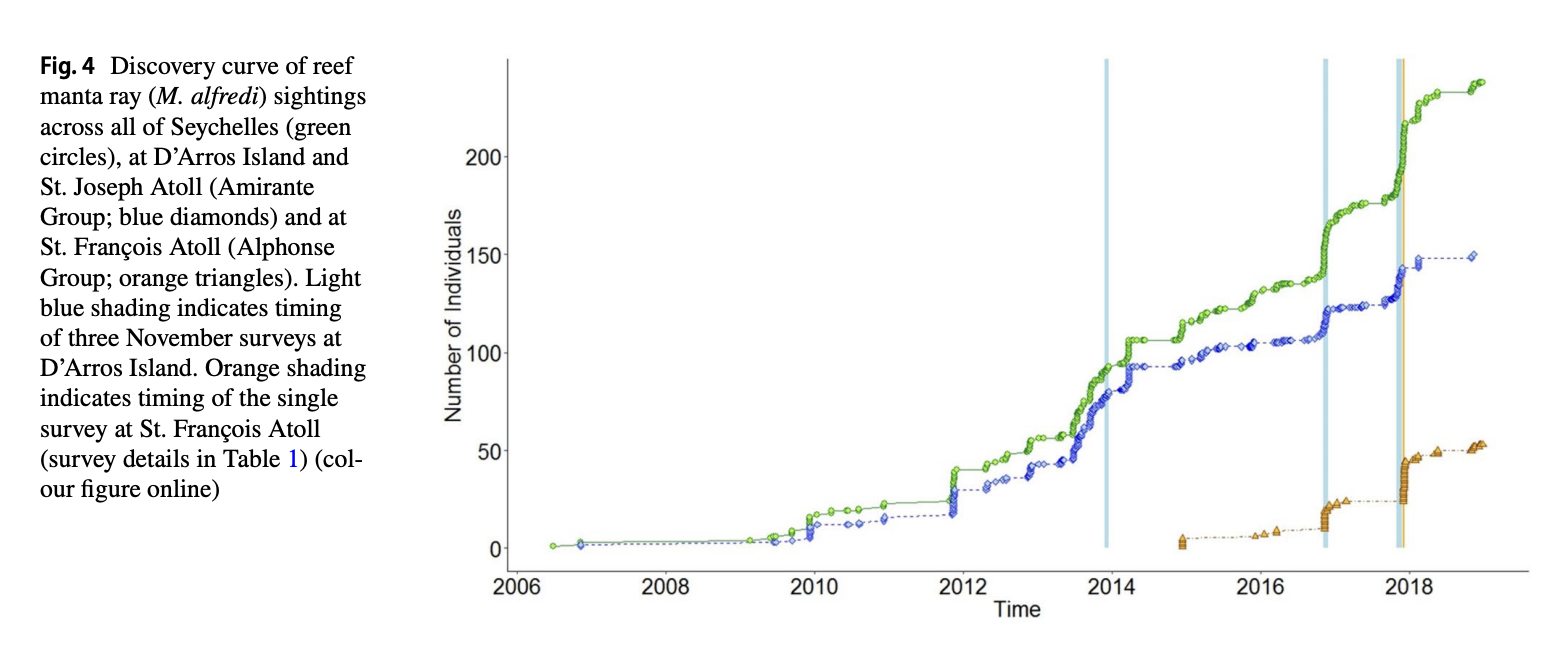
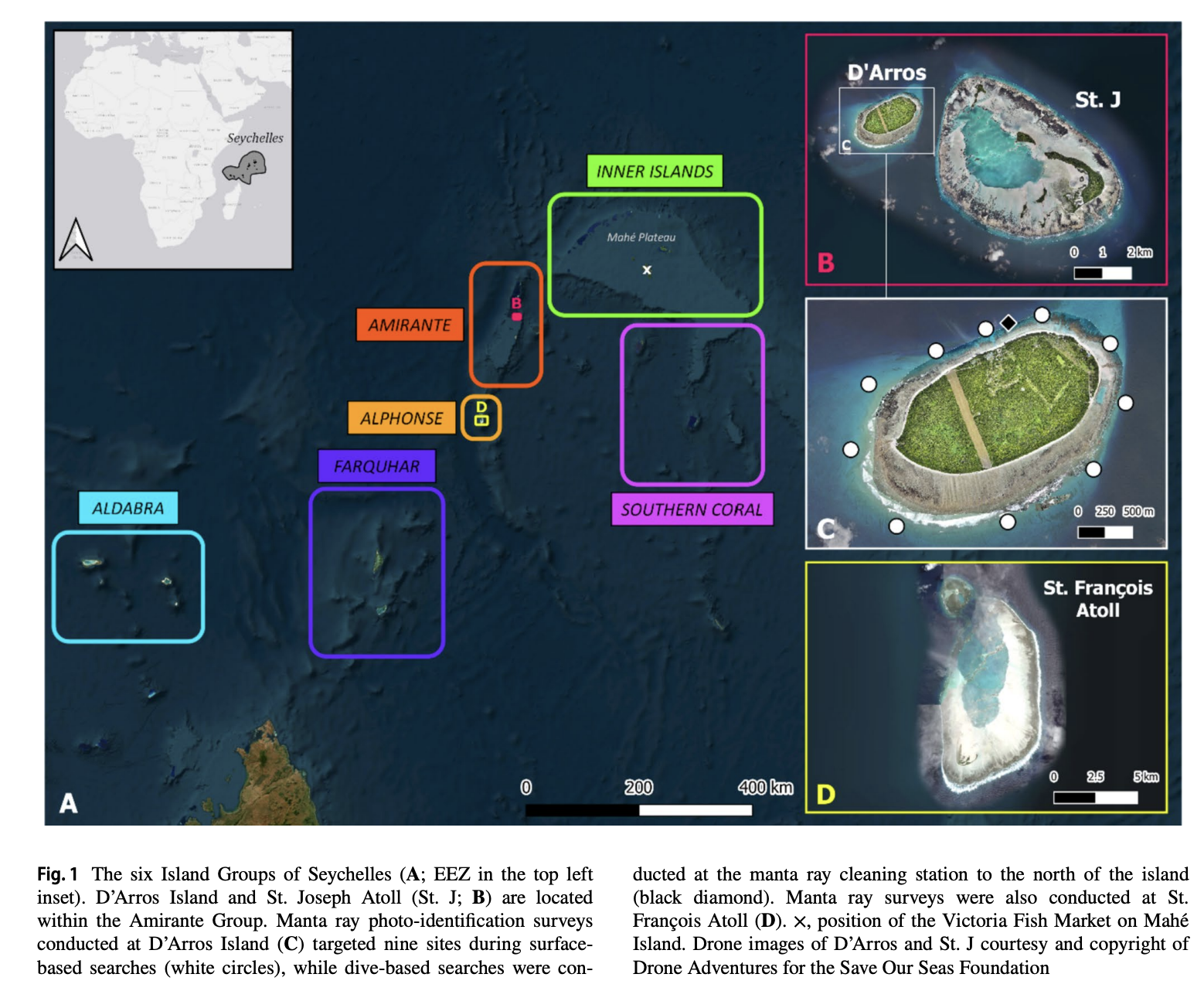
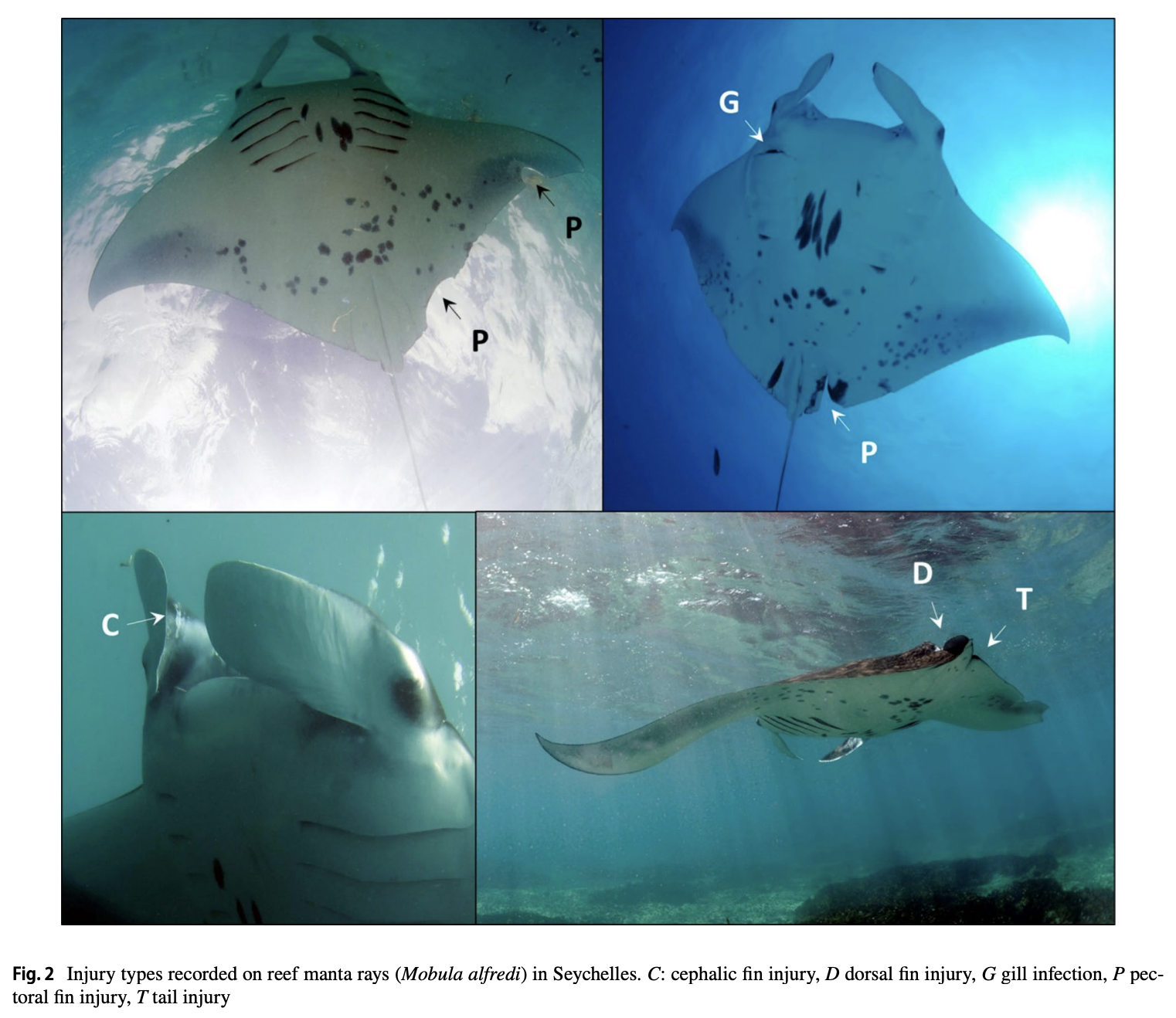
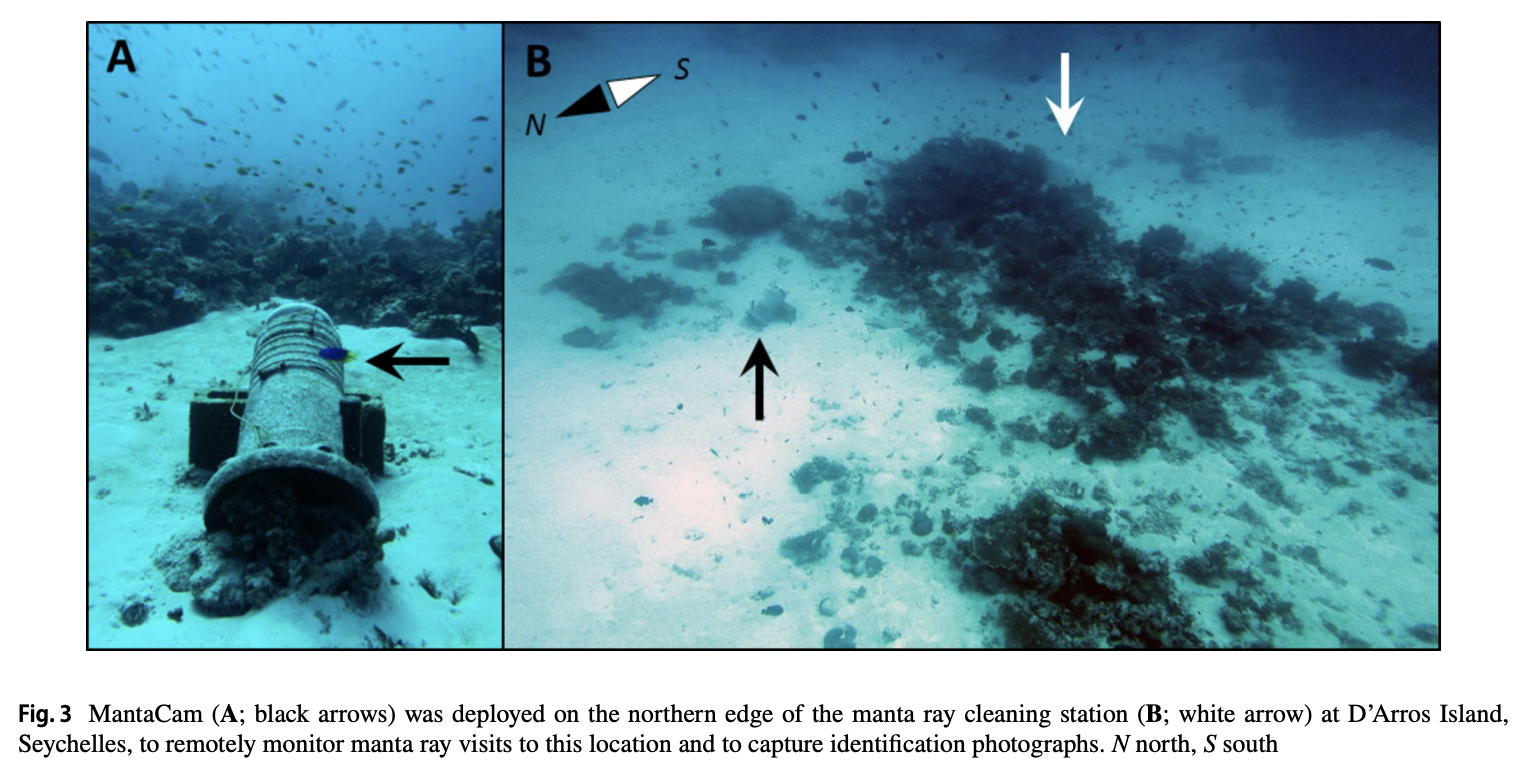

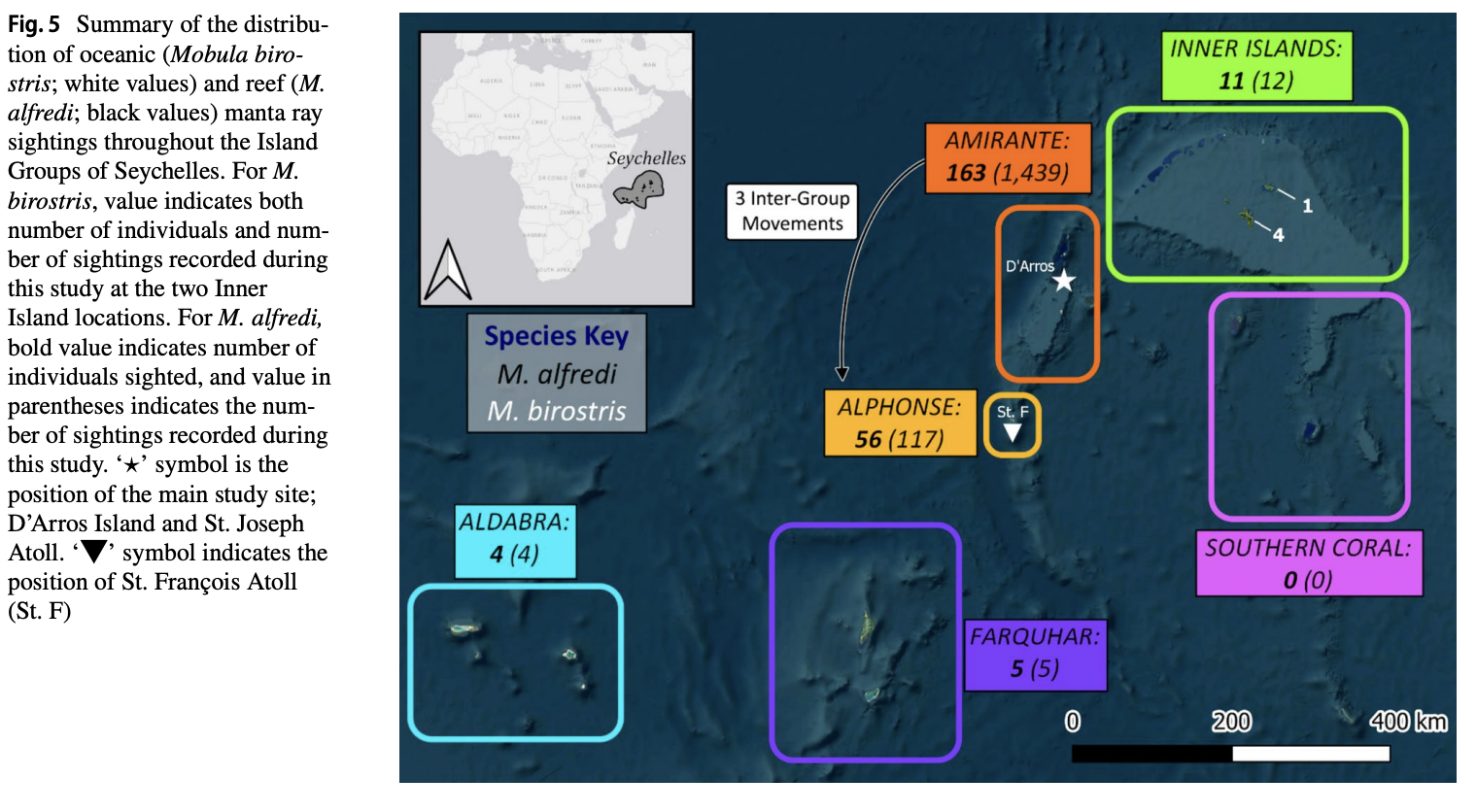
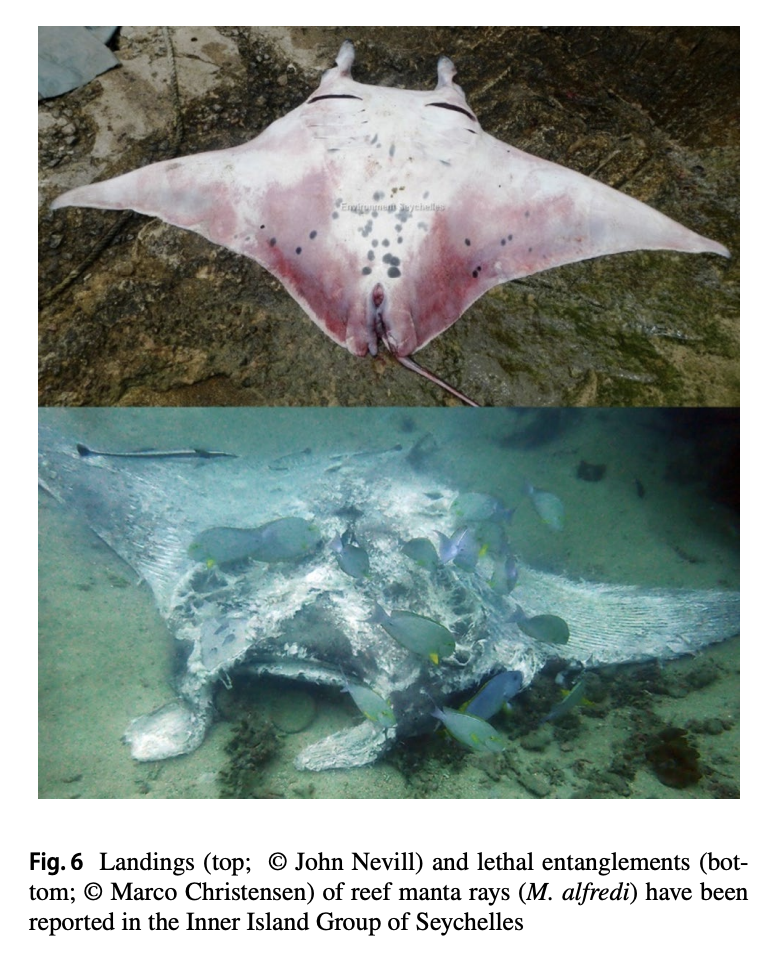
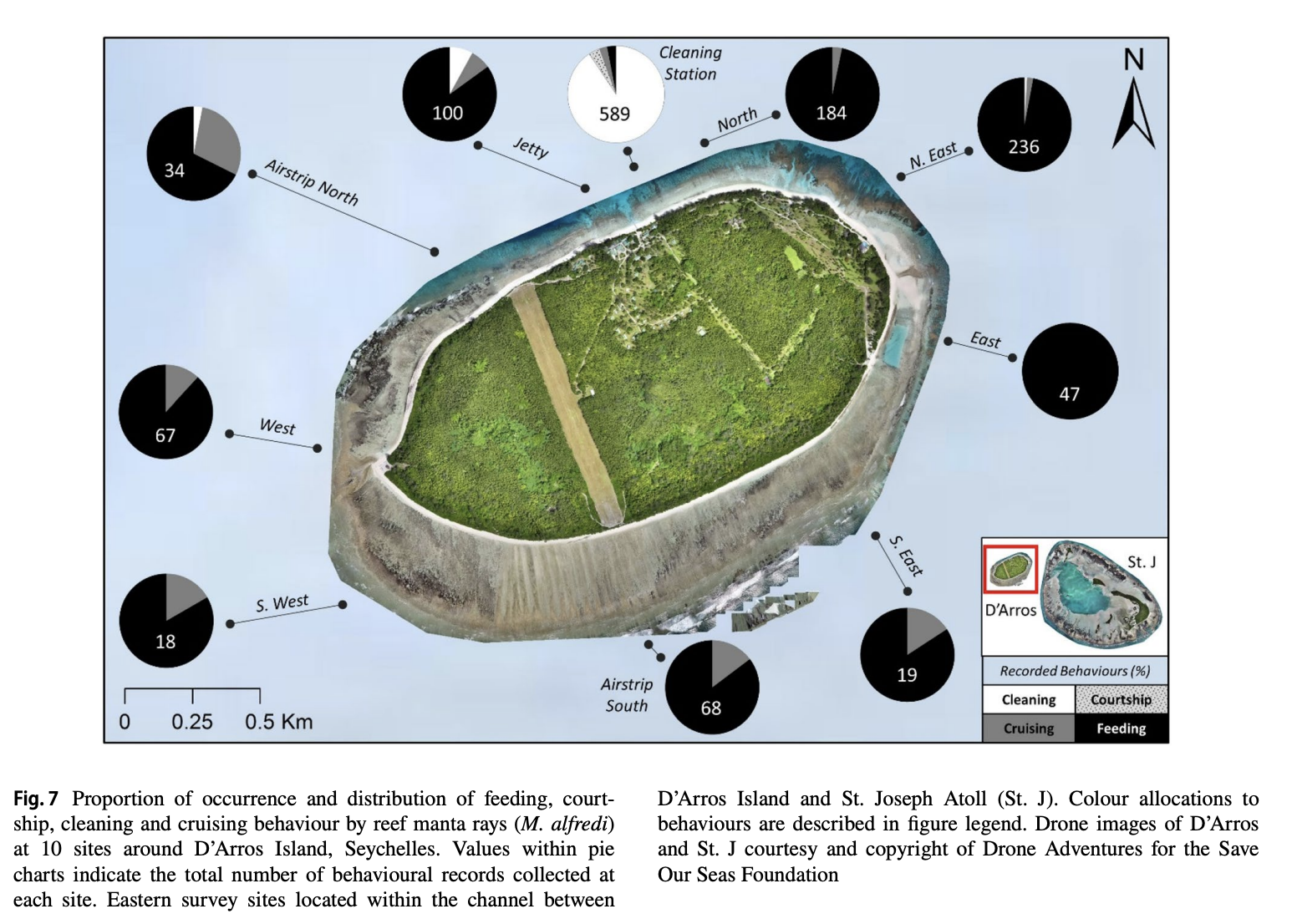
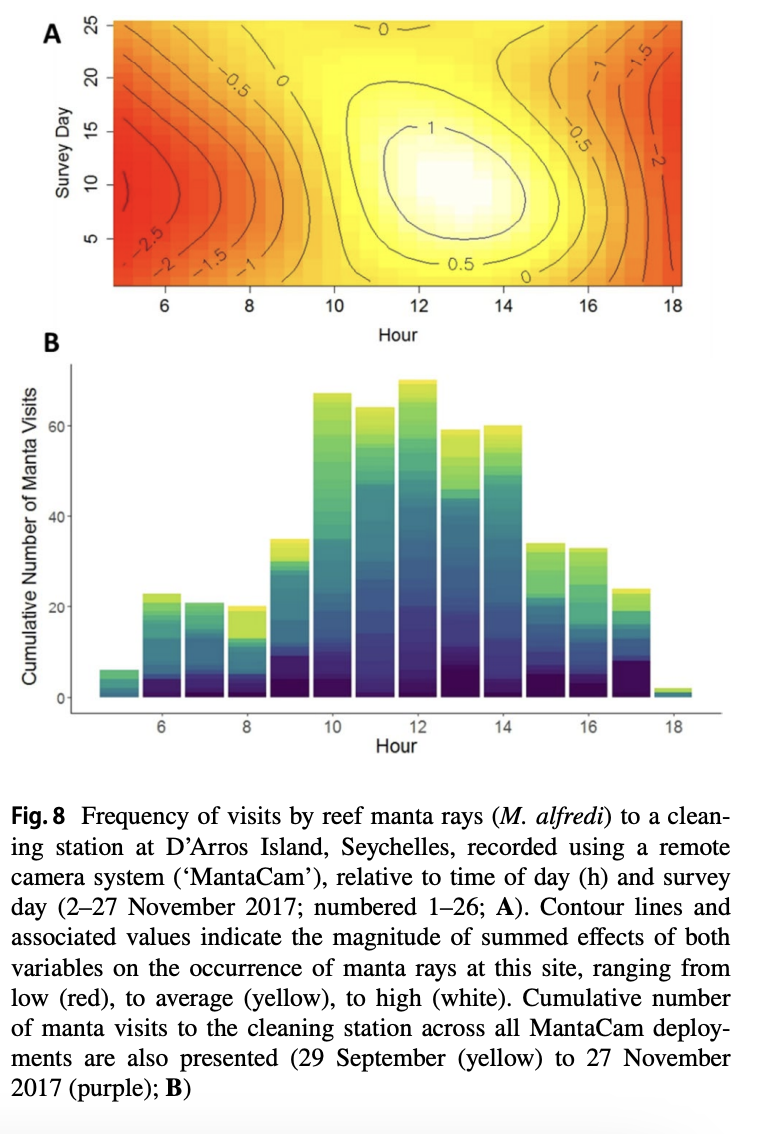
Summary: This study focused on understanding population sizes, residency patterns, and habitat use of oceanic and reef manta rays in Seychelles. Through photo-identification and remote underwater camera systems from 2006 to 2018, they found infrequent sightings of oceanic manta rays, indicating possible aggregation areas beyond the study's scope. Reef manta rays however, showed frequent sightings at specific locations, with equal representation of males and females. They noted a crepuscular foraging strategy and suggested that marine protected areas in Seychelles could benefit reef manta ray conservation with proper regulations and monitoring.
Abstract
“Understanding the aggregation and habitat use patterns of a species can aid the formulation and improved design of management strategies aiming to conserve vulnerable populations. We used photo-identification techniques and a novel remote underwater camera system to examine the population sizes, patterns of residency and habitat use of oceanic (Mobula birostris) and reef (Mobula alfredi) manta rays in Seychelles (5.42°S; 53.30°E) between July 2006 and December 2018. Sightings of M. birostris were infrequent (n = 5), suggesting that if aggregation areas for this species exist, they occur outside of the boundary of our study. A total of 236 individual M. alfredi were identified across all surveys, 66.5% of which were sighted at D’Arros Island (Amirante Group) and 22.5% at St. François Atoll (Alphonse Group). Males and females were evenly represented within the identified population. M. alfredi visited a cleaning station at D’Arros Island less frequently during dawn and dusk than at midday, likely due to the adoption of a crepuscular foraging strategy. The remote and isolated nature of the Amirante and Alphonse Group aggregation areas, coupled with the lack of a targeted mobulid fishery in Seychelles, suggests that with appropriate regulations and monitoring, the marine protected areas gazetted within these two groups will benefit the conservation of M. alfredi in Seychelles”
Infographics
Author Affiliations
School of Biological Sciences, The University of Western Australia
The Australian Institute of Marine Science
Save Our Seas Foundation—D’Arros Research Centre
The Manta Trust
The Oceans Institute, University of Western Australia
Oceanographic Research Institute, South African Association for Marine Biological Research
South African Institute for Aquatic Biodiversity (SAIAB)
School of Agriculture, Biomedicine and Environment, La Trobe University
Island Conservation Society
Island Biodiversity and Conservation (IBC) Centre
University of Seychelles
Funded by
CAUL and its Member Institutions
Save Our Seas Foundation
The Manta Trust
Australian Institute of Marine Science
SOSF-D’Arros Research Centre
Island Conservation Society (ICS)
The Alphonse Foundation
The University of Western Australia
Islands Development Company
Blue Safari Seychelles
The University of Western Australia Postgraduate Student’s Association
Contribution towards the Manta Trust's Strategic Plan
Goal 3: Strategic Objective 3.1: All manta and devil ray species in the regions where we work are fully protected and conserved through species management plans.
Goal 3: Strategic Objective 3.2: Key manta and devil rays aggregation sites in the regions where we work fall within protected areas that are effectively managed.
Goal 3: Strategic Objective 3.4: The environmental drivers on manta ray populations are better understood to help determine the impact of the climate crisis and inform conservation measures.


